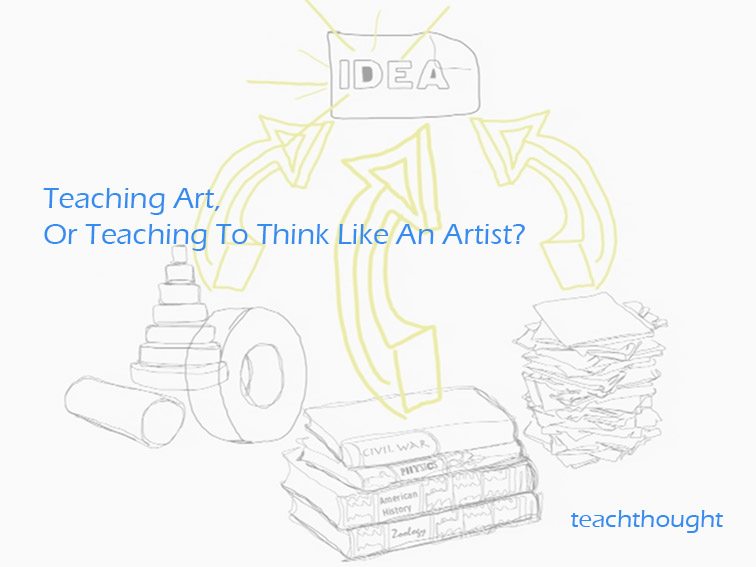Are You Teaching Art, Or Teaching To Think Like An Artist?
by TeachThought Staff
Be creative. Curious. Seek questions. Develop ideas. Play.
These ideas are familiar to modern educators, as they represent a kind of polar opposite to the standardized and industrialized form learning has taken on–or is at least perceived to have taken on in the current era of accountability. It was interesting then to see these questions lead into a broader one: Should we teach art, or teach students to think like an artist? Should we teach history, or teach students to think like a historian?
While this implies that you can’t do one without the other, if we assume for a moment that can’t do both and have to choose, where would our priority be? We’ve asked a similar question before: Are You Teaching Content, Or Teaching Thought? The video below from Cindy Foley frames that idea through the ‘content area’ of art, asking the question, “Should we be teaching art, or teaching students to think like artists?”
In our estimation, this is one of the key questions facing education–a connected learning endeavor–in the 21st century as we shift from teaching content to teaching habits, process, and thinking. Foley identifies three habits artists consistently demonstrate.
3 Habits Artists Demonstrate
1. Comfort with Ambiguity
2. Idea Generation
3. Transdisciplinary Research
You can hear Foley explain the concept more fully in the TED Talk below. The idea extends way beyond art, right to the core of education as an icon, process, and tool of social improvement and wisdom.
“What is the purpose and value of Art education in the 21st Century? Foley makes the case Art’s critical value is to develop learners that think like Artists which means learners who are creative, curious, that seek questions, develop ideas, and play. For that to happen society will need to stop the pervasive, problematic, and cliché messaging that implies that creativity is somehow defined as artistic skill. This shift in perception will give educators the courage to teach for creativity, by focusing on three critical habits that artists employ, 1. Comfort with Ambiguity, 2. Idea Generation, and 3. Transdisciplinary Research. This change can make way for Center’s for Creativity in our schools and museums where ideas are king and curiosity reigns.
Cindy Meyers Foley is the Executive Assistant Director and Director of Learning and Experience at the Columbus Museum of Art. Foley worked to reimagine the CMA as a 21st-century institution that is transformative, active, and participatory. An institution that impacts the health and growth of the community by cultivating, celebrating, and championing creativity. Foley envisioned and led the charge to open the 18,000 sq. ft. Center for Creativity in 2011. In 2013, the museum received the National Medal for Museums in recognition of this work. Foley guest edited and wrote chapters for Intentionality and the Twenty-First-Century Museum, for the summer 2014 Journal of Museum Education.
In 2012, Foley received the Greater Columbus Arts Council Community Arts Partnership award for Arts Educator. She was a keynote speaker for the OAEA (Ohio Art Education Association) 2012 Conference. She is on the Faculty of Harvard University’s Future of Learning Summer Institute.
Foley is a graduate of the University of Kentucky and Ohio State University. Prior to joining the Museum, she was with the Institute of Contemporary Art at the Maine College of Art, the Portland Museum of Art, and the Wexner Center for the Arts.”
Teaching Art, Or Teaching To Think Like An Artist?

